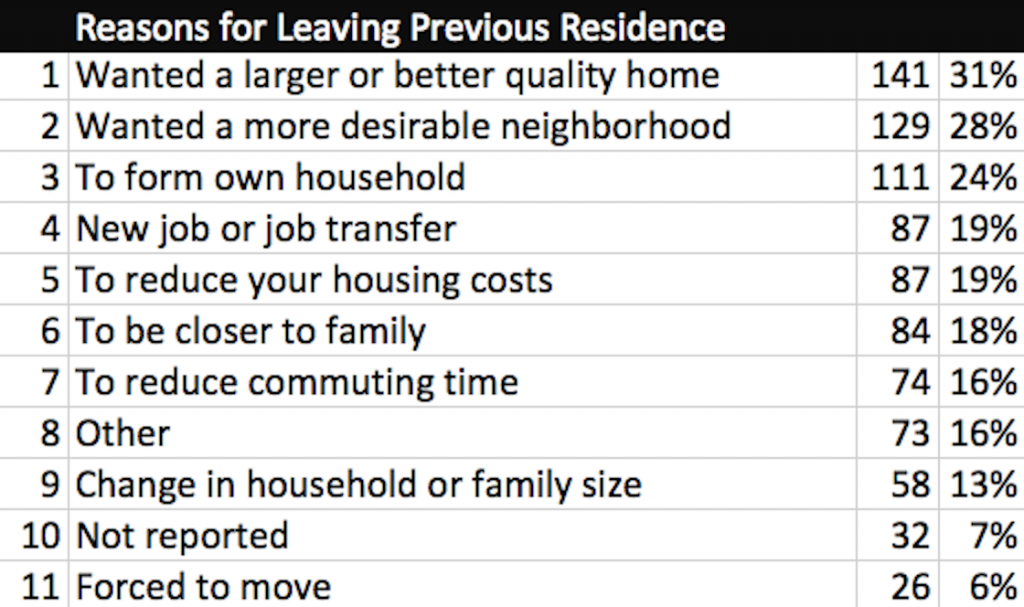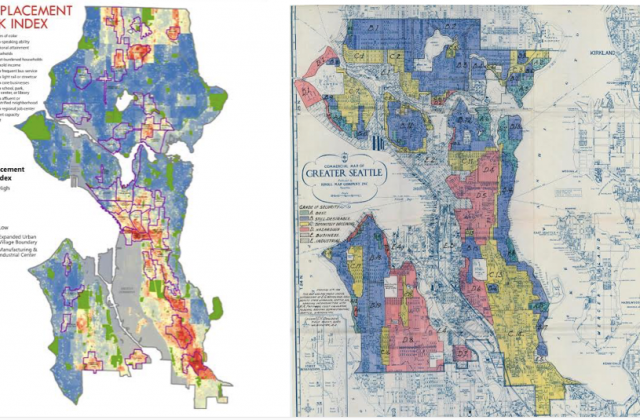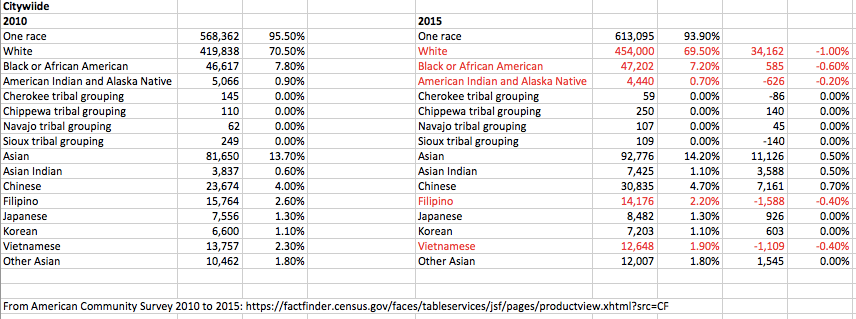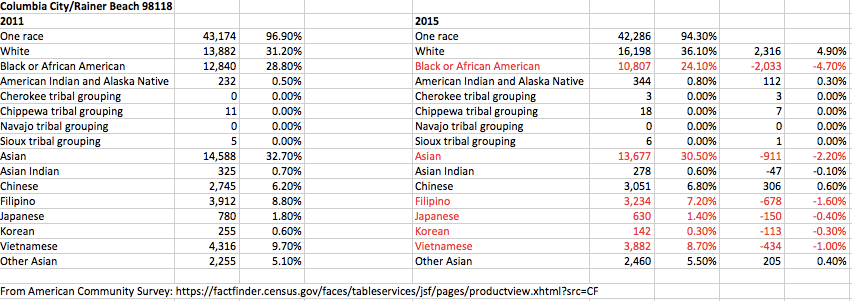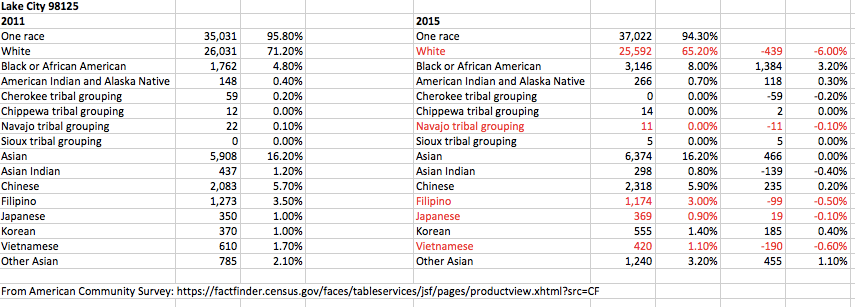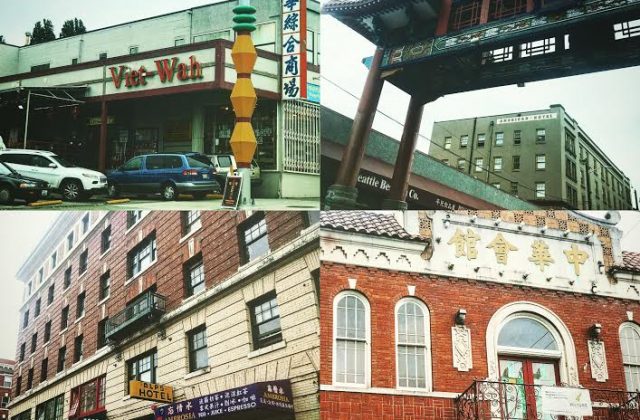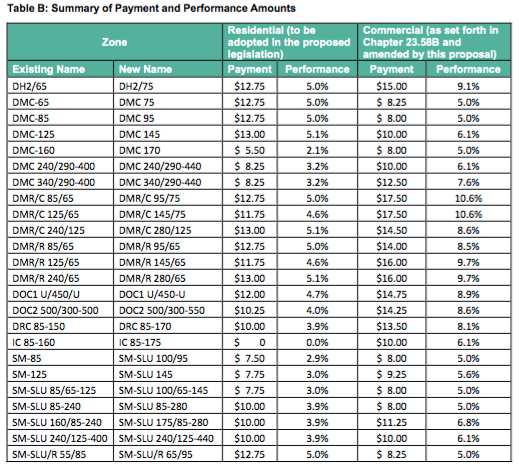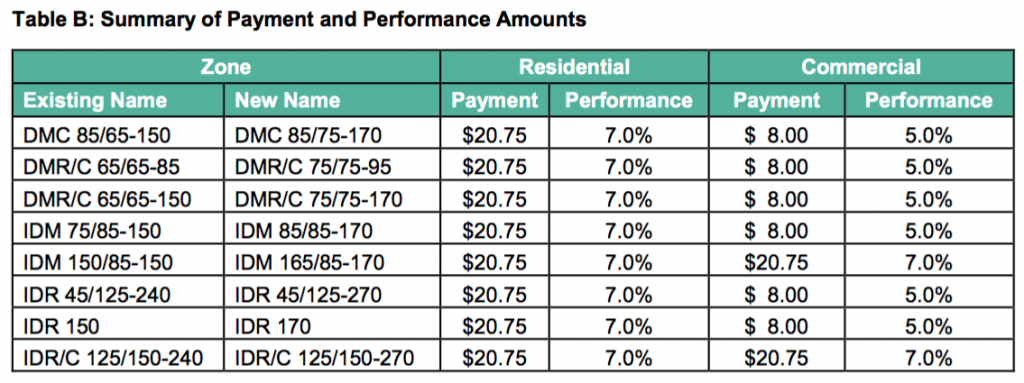Affordable Seattle: Magical Thinking Meets Brute Force
I discovered something this weekend, a new website created by the socialist party in Seattle called Affordable Seattle. What would be funny if it wasn’t so serious is how wrong the website is about who is actually running Seattle. The website is sort of Orwellian in its narrative of “big business” and promising that if Jon Grant and Nikkita Oliver are elected to office that things will get better because of some sort of redistributive scheme. The site’s tag line about “people not profits” is not only trite, but is a false dichotomy; I suppose Sawant would have people who build housing work for free? And developers and landlords aren’t running the city; if we were would we have Mandatory Inclusionary Zoning (MIZ) and legislation forcing landlords to help tenants register to vote? Here’s Affordable Seattle’s “solution” to the problem of high prices:
-
Massively Expand Affordable Housing
Build tens of thousands of quality city-owned homes, paid for by taxing big business. -
We Need Rent Control!
As a first step, require at least 25% of new private sector development to be affordable. Organize a movement for tenant collective bargaining rights to lower rents. -
Make Landlords Pay for Economic Evictions
Stop the displacement of low-income households! When renters are forced to move due to major rent hikes, landlords should be required to pay moving costs.
First, I have no problem with the City of Seattle building subsidized housing on its own property. In fact, we’ve touted this idea before because the City could easily create thousands of units this way. The problem is the Councilmember Sawant has done exactly nothing to advance this. Zero. Nothing. She asked for a study and the City staff produced a desultory report essentially shrugging and saying using City debt to build on City owned land was just too hard. They responded to the proposal like a twelve year old would to a command to clean his room: “C’mon! I don’t wanna!” I urged Sawant to get an independent and outside consultant to run the numbers. She did absolutely nothing.
Rent control is an incredibly bad idea as we know, but at least the socialists acknowledge that the MIZ scheme is a form of rent control. They just want more control which is why they want an inclusion rate of 25 percent. And as I pointed out last week, there just isn’t any evidence to support the notion that there are massive numbers of people being forced out of their apartments. In fact, the United States Census data from the American Housing Survey show that only 6 percent of people who moved in the metro area cite “forced out” as the reason for their move.
That is dead last, and keep in mind that respondents to the question could cite multiple reasons. The notion that people are being “forced out” just isn’t supported by real data.
But the funniest paragraph on the website is this one:
City Hall is dominated by corporate developers like Vulcan, owned by billionaire Paul Allen, landlord lobbyists, and the Chamber of Commerce. They are profiting off the affordable housing crisis. To protect their profits and block popular demands for affordable housing, they are spending big on city elections to maintain their political control. To make Seattle affordable, we need to break the corporate stranglehold over City Hall by organizing our neighborhoods and electing our own candidates.
The Chamber? Insert laughing-till-I-cry emojicon here. The notion that the Greater Seattle Chamber of Commerce has any influence on the outcome of this election is absurd. Over the period of time that Sawant has been in office the Chamber has ceased to function as anything other than a booster for tourism for the city. That’s important, but their effect on issues related to wages, work hours, tenant regulation, and housing development has been zero. And an endorsement from them in Seattle probably loses as many votes as it gains.
But the site is correct that Vulcan does control City Hall, at least when it comes to the execution of the Grand Bargain. Mayor Ed Murray looks over his desk and sees “the development community” when he sees Vulcan lobbyists, even though Vulcan builds a teeny tiny percent of new housing in Seattle. Still, they wrote the numbers into the Grand Bargain that we all have to live with now. And landlord lobbyists? Jamie Durkan in an interview with George Howland said what we’ve known for years, City Hall is in the bag for the socialists. Land lords aren’t even consulted just to say they were when the City Council passes legislation.
Yes, it’s true that Jenny Durkan is raising lots of money, but she’s far from being assured election because of money. Polls show her in the mix, but not dominant. If anything, you’ll see Durkan starting to mouth the socialist party line in oder to neutralize charges that she’s a corporatist. It’s what politicians do. Just look at the wide eyed City Councilmembers who do Sawant’s bidding without much question other than to passively aggressively complain that, “Some people say that we’re corporatists, but those people would be wrong,” just before they vote for the latest Sawant scheme.
Councilmember Sawant is not a politician, she’s a performance artists. Like Donald Trump its all about telling a good story about the corporations and the greedy developers and landlords and getting big cheers. That’s all. She doesn’t have the first clue about policy and how to make it or implement it. It’s not that she’s stupid, but she’s a performer looking for audience approval. If policy gets made from her story about the Chamber running City Hall, that’s just great. But it’s all about the applause lines, not solving real people’s problems. If only her 8 colleagues would get that the screaming mobs in their faces are just that: a mob. Ignore them. But they just don’t have the courage.
Fighting Racism in Seattle Means Building More Housing, Not Less
[They’ll] make you think that they’re doing you a favor. Some of you asked me today about the Oakie Doak, well that is a classic example of the Oakie Doak. And what is the Oakie Doak? A thing, a promise given as if it has great value when in fact it is useless, always designed to deceive, given mostly, but not always, by posturing, pontificating, and picture taking politicians.
Thomas N. Todd
Civil Rights Attorney
Addressing the Ohio Education Association in 2008 on the hazards of non-educational “experts” being recruited to teach in public schools
The other day an article from the Seattle Emerald appeared in my Facebook feed, South End Residents of Color Clap Back at the Times. I resonated with the opening paragraph of the post.
Welcome to Seattle where the rich get richer, Blacks get pushed out, and the Seattle Times prints lazy, racist articles about the South End where many of the city’s remaining People of Color live.
I’ve resisted using the word “lazy” to describe the manifest failure of the Seattle Times to do its job as a daily paper when it comes to covering growth and change in Seattle. How about desultory? The Times just doesn’t know how to see growth except in the most cartoonish terms, and I agree with this writer that the changes in the city’s demographics can’t be summed up the way the Times often does, as an opportunity to panic and fret about changes associated with growth.
But the author commits the same mistake while criticizing the Times when she says that, “Blacks get pushed out.” But she’s not alone in making this statement and when it comes to growth and change the notion that Seattle is in the process of ethnic cleansing is almost never challenged. That’s because, let’s face it, Seattle is a predominantly white city, and most of the people involved in discussions about growth are, in fact, white. When challenged they simply can’t respond for fear of being called racist.
I don’t have that problem. As a person of color, I have long been appalled at the way race is used to promote counterproductive policies in the city when it comes to housing. We have zero quantitative definitions of gentrification and displacement but our answer, as a city, to these poorly defined notions is to limit housing production, tax it, and impose a new form of redlining in areas that the City designates as, “low opportunity.” And, not incidentally, most of the people upset and gesticulating wildly about displacement and gentrification are, you guessed it, white single-family homeowners. Let’s look at three charts of census data.
First of all, as a city, we are becoming less white. The overall percentage of white people dropped by 1 percent, and that means that we have slightly more people of color in the city than we did five years ago. Yes, Black people are fewer as a percentage of overall population, but their overall number is about the same. It’s tough to argue that Black people or people of color are fleeing the city based on these numbers. In fact, the city is sort of staying more or less the same with some tilt away from whiteness.
But what about Seattle’s south end, specifically neighborhoods like Columbia City and Rainier Beach? Well that second chart is for zip code 98118 and includes both of those neighborhoods. Yes, it’s true that the actual number and percentage of Black people in those census tracts has fallen by about 2,000 people or 4.7 percent, and there have been, over about the same period (2011 – 2015) about 2,300 white people.
But before I say anything about that, look at what’s happening in the north Seattle neighborhood of Lake City, zip code 98125. You’ll see that the real number of Black people has increased significantly, by 1,384 while over the same period there are 439 fewer white people. By percentage, the drop in white people in Lake City, 6 percent, is greater than that of the drop of Black people in south Seattle.
So what’s going on?
We simply don’t know.
One damaging and sort of hopeless narrative is articulated in the first paragraph of the post I started out with: Black people, 2,000 of them, have been forced out by 2,300 white people. This story is all about opportunistic white people willfully squeezing out poorer but established Black families, opening up fancy coffee shops and restaurants, and wiping out the culture of the neighborhood to make it more white. Where are those Black people going? They are moving out of Seattle, and the city is becoming more and more white.
Who benefits from the status quo and not building more housing? Single-family homeowners who will see their investment “skyrocket” in value because demand is increasing and supply for new housing options isn’t keeping up. And guess what, those homeowners are mostly white.
OK.
Or, maybe many of those Black people moved to Lake City. Would anyone argue that those white people in Lake City were, “displaced” by Black people? Is Lake City undergoing a de-gentrification? And where did the 359 Native Americans and Asians go between 2011 and 2015? Were they forced out by the influx of Blacks into the neighborhood?
Why in the world would we conclude these things based on so little data? This hopscotch of conclusion jumping has currency because it serves a larger, anti-housing and counter productive narrative about race and growth. The story is about ethnic cleansing, victimization, and keeping the status quo. But who benefits from the status quo and not building more housing? Single-family homeowners who will see their investment “skyrocket” in value because demand is increasing and supply for new housing options isn’t keeping up. And guess what, those homeowners are mostly white.
We could probably figure out why people of various income levels, races, and other designations have moved or are moving. We could go door to door, recruit people to participate in a years long study and track their movements, ask lots of questions, and measure dozens of variables like gross income, wages, inflation, regional demographic trends, and a host of others. We could establish control groups. We could spend millions to pinpoint exactly why the south end has lost black people and Lake City has gained black people. Or we could just believe its about ethnic cleansing because that supports what we’ve already concluded: things are bad because people from the outside are pouring in to steal from us and make life worse.
Or we could all work together to build more housing, of all kinds, in all parts of the city, for all levels of income. White people who don’t want change are exploiting people of color in Seattle ruthlessly, using the challenges faced by people with less money and fewer resources as an excuse to preserve their own hegemony and wealth. Data actually support this conclusion : as supply drops, price goes up, people with less money who are disproportionately people of color, can’t compete for existing housing.
Even our suffering and poverty is taken from us to benefit people who already have money, wealth and dominance
There is simply no data, none, zero, nada, that supports a narrative that white people are willfully forcing their way in to any neighborhood and forcing black people out. Ironically, that story and the “solution” for it of building no more housing in the south end or taxing it only makes prices higher and actually accelerates the problem all poorer people face when looking for housing. It’s actually a form of redlining that masquerades as noblesse oblige.
People of color in Seattle, when it comes to housing in particular, are not being served by arguing for interventions that make it harder to build more housing. We are not helped demographically or economically or culturally by banding together with know nothing neighbors who say that new housing is racist. We, in truth, being once again exploited and taken advantage of to benefit the dominant culture; even our suffering and poverty is taken from us to benefit people who already have money, wealth and dominance.
This is already a long post, but I am going to quote from a Ta-Nehisi Coates who quotes this passage, a lament by Private Thomas Strother of the United States Colored Troops, (I first heard the quote watching Death and the Civil War):
To suppose that slavery, the accursed thing, could be abolished peacefully and laid aside innocently, after having plundered cradles, separated husbands and wives, parents and children; and after having starved to death, worked to death, whipped to death, run to death, burned to death, lied to death, kicked and cuffed to death, and grieved to death; and, worst of all, after having made prostitutes of a majority of the best women of a whole nation of people . . .would be the greatest ignorance under the sun.
Last week a black woman in our city called the police for help because she thought someone was trying to break into her apartment. She likely was afraid and troubled enough she grabbed a knife, and was holding it when she answered the door (many of the facts about this and what they mean are still in dispute). Seattle police shot and killed her in front of her children. Would they have done the same to me? Probably not. I’m not black.
We’re not going to get over or solve the scourge of slavery in my lifetime. In fact, there are people, many people, alive today that lived in an America in which to marry, or use the same water fountain, stay in the same hotel, or live in the same neighborhood as a white person was illegal and could result in death. Do you think we’re over that yet? We’re not. Racism is real and alive and well right around the corner. Your corner. And you might even be racist yourself.
But the notion that the development and construction of new housing in our city is racist or contributes to displacement or harms people of color or people with less money to spend is the opposite of what we know about economics. We’re being played, and played hard. The best thing for people of color and poor people to do is demand more and more housing and to seek out every opportunity to build housing ourselves, in our own communities and everywhere else. That’s the only way we’re going to make this city a safe and prosperous place for everyone who wants to live here.
Mayor Election 2017: Lots of Candidates but Not a Lot of Leadership
Running for office isn’t easy. It’s more or less a gauntlet of trying to make and keep people happy. There is an element of sport to it since it is competitive. But anyone who has been through it will either say they love it or they hate it. Those that love it tend to be elected officials; those that don’t are, well, everyone else. As I said to one of the candidates last week when we interviewed them, whenever someone shows up and asks me for advice because they’re running for office, I generally ask the, “When did you stop taking your medication?” Too many people running for office suffer from a serious and incurable disease, Sally Field Syndrome; the desperate and urgent need to be liked (I came down with the disease in my 20s, but it’s in remission). Some politicians can manage and learn to live with the symptoms of the disease, but, sadly, for most its a terminal condition, and the desire to be liked and appreciated leads to all manner of bad decisions and policies the rest of us have to live with forever.
The latest crop of 21 candidates are a mixed bag of people with multiple disorders (see Alex Tsimmerman), including Sally Field Syndrome and socialism, but there are some candidates who have emerged as more lucid than others. The Master Builder Association’s Political Action Committee, the Affordable Housing Council (AHC) and members of Smart Growth Seattle interviewed 5 candidates, Senator Bob Hasegawa, Libertarian Casey Carlisle, former State Representative Jessyn Farrell, former Mayor Mike McGinn, and former United States Attorney Jenny Durkan. Carlisle is a smart and principled candidate, but he’d admit he is a a big long shot. Endorsements shouldn’t just be about electability, but for this post I want to focus on the 4 candidates that might emerge out of the primary.
I give a general view, then whether I think the candidate would be good for housing, and by that I mean would the candidate stop or pause the disastrous policy of Mandatory Inclusionary Zoning (MIZ) in the form of the City’s Mandatory Housing Affordability (MHA) Program? And does the candidate understand that builders already contribute millions of dollars in taxes and fees to support growth. In fact, builders are doing God’s work, building housing for people who need places to live in our city. It shouldn’t be surprising that none of the candidates expressed a deep appreciation of the work that builders and developers do, although some seemed more persuadable than others. Also I consider whether the candidate would survive the primary, although this is truly a big unknown since there are so many candidates that could gather just enough votes to squeak through the primary. So far, I don’t recommend endorsing anyone, but McGinn and Durkan are getting close.
And by the way, leadership to me means telling the voters they are wrong. That’s the single most important medicine for Sally Field Syndrome. It’s strong medicine, but it really does work wonders.
Senator Bob Hasegawa
Hasegawa is a long time labor activist, and his campaign reflects this. For the most part, Hasegawa reflects the growth fatigue being experienced by older, more established single-family residents. He said in his questionnaire that, “growth is a regional issue and the responsibility for accepting growth should be shared throughout the region.” This is the ‘taking growth’ school of thought; growth is like radioactive waste, something that should be avoided and put somewhere far away where it can’t hurt anyone. Hasegawa thinks that the establishment of a public bank will solve the housing problem. I think a public bank is a good idea, but for it to back housing it would have to make loans to private developers and the constitution currently won’t allow that.
Good for housing?
Hasegawa would likely take a high inclusion and high fee approach to implementation of Mandatory Inclusionary Zoning (MIZ). Interestingly, after our conversation, it seemed to dawn on him that the vast majority of housing is built by smaller family owned businesses, not corporations. If elected, he might listen to reason on the impact of MIZ on housing production.
Survives the primary?
While Hasegawa has won elections in the Seattle sections of his legislative district, those are low turnout areas and he can’t raise money during the session, meaning he’s running a money free campaign; laudable but unlikely to produce a win.
Endorsement?
No. However, if Hasegawa makes it through the primary and is faced off against Cary Moon or Nikita Oliver, neither of which has any experience in government and who support higher fees and mandates, Hasegawa might be far more appealing.
Jessyn Farrell
You’d think that Farrell would be the ideal housing candidate with her background in transportation policy and extensive knowledge of the political process at the state and regional level. But Farrell has a stubborn urge to talk about developers and builders “making a contribution” to housing. When pressed, she just believes that we should tax new housing to pay for some subsidized housing, something that makes no economic sense. Like many so called “urbanists,” Farrell likes the politics of MIZ because, on the surface, it represents some kind of compromise. But she won’t acknowledge that economically, adding costs to housing will make it more expensive and she didn’t seem to understand that the fire hose of cash created by MIZ and extracted from market rate housing will wind up paying for very, very expensive subsidized housing that will take years to build.
Good for housing?
Farrell has adopted the language of supply and demand, acknowledging that, indeed, increasing supply would help housing prices. But she has a kind of middle of the road approach to getting there. It was pointed out that Farrell would end up being kind of like the 10th Councilmember, sort of going along with the tide of well meaning but damaging legislation being passed lately by the Council. Like Councilmember Johnson, saying the word “supply” doesn’t mean you’ll do anything about that once elected.
Survives the primary?
Farrell plainly states that 20 percent of the primary vote comes from her 46th legislative district where she was elected and reelected to the legislature. In a crowded field this could make the difference.
Endorsement?
No. Farrell, like her north end colleagues Rob Johnson and Mike O’Brien are enamored of process and policy that addresses political problems rather than actual housing problems. We don’t need fees or taxes on new housing to fuel subsidized housing; if we produced more market rate housing free of restraints, prices would go down, options would increase, and the demand on the subsidized housing system would ease. But this isn’t palatable politically. Maybe Farrell will come around someday, but I’m not betting on it.
Mike McGinn
McGinn seems to be running a somewhat less intense campaign in the past, relying, it would seem, on the fact that some people think he’s still Mayor. This might seem silly, but it’s a real thing. Lots of people in Seattle remember McGinn, and he’s counting on them to give him another shot, and it’s a reasonable strategy. McGinn said he didn’t necessarily want the endorsement of builders; he seems to be building a platform based on the fact that the Grand Bargain was not inclusive. He’s right. But it wasn’t just neighbors that were excluded, but the vast majority of builders and developers who build housing. He seems prepared to stop MIZ in its tracks.
Good for housing?
McGinn gets annoyed when I say it, but he’s playing off the neighborhood opposition to MIZ in the form of Mandatory Housing Affordability. I don’t have a problem with that. The end of the MHA program is good for housing policy, period, whether it dies from wounds inflicted by angry, entitled neighbors or our inevitable lawsuit. As Tommy Lee Jones would say, “I don’t care!” Just kill it or at least slow it down. The problem is that the Council has embraced MHA and would see McGinn’s efforts as an attack on their agenda; I’m not sure he can stop it.
Endorsement?
Hmmm. McGinn would likely be very disruptive to the status quo at City Hall. I think that’s a great thing. Could he make things worse? Possibly. But as it stands now, McGinn would likely create enough disruption that it could buy us some time and a reprieve from MIZ in 2018.
Jenny Durkan
It was notable that of the 5 candidates we talked to, Farrell and Durkan were the only ones with staff accompanying them, and Durkan’s was the only one to sit next to her during our talk. Durkan is well backed by City Hall regulars and by big developers, like Vulcan. When I pointed out my concern about that she pushed back saying, “How do you know I met with Vulcan first?” I said that I read it in the papers. She didn’t deny it but didn’t like the fact that I brought it up. The bad news about Durkan is that she is new to land use and housing policy, and the people she knows and who are supporting her candidacy, have terrible and self serving notions about what to do about housing issues.
Good for housing?
The good news about Durkan is that she is intelligent and experienced and I could see her recognition that MIZ is problematic economically. I think of all the candidates, while the most poorly advised, probably has the greatest potential of renegotiating the Grand Bargain. While this would like be simply figuring out how much more ransom non-profits want paid, I think what could emerge is a voluntary program that was not extortionary. But big developers downtown like Vulcan and the Housing Development Consortium would likely still be the dominant forces, a terrible thing for housing policy.
Endorsement?
We’ll see. Durkan isn’t used to being hassled as evidenced by her evident but low-key annoyance at my pointed questions. The questions are uncomfortable; Vulcan and the people in the room who signed the Grand Bargain support her. But she’s going to have to open the door and listen to the people that actually build housing. I asked her, very explicitly, to stop MIZ, period. I also handed her a copy of RCW 82.02.020 and urged her (she’s a lawyer!) to read it a few times. Durkan is probably the only candidate running that has the ability and smarts to stop Seattle’s slide into liberal, progressive oblivion. But will she?
MHA in the International District is Unfair and Ignores Complexity of the Neighborhood
June 14, 2017
To: Councilmember Rob Johnson, Chair, Planning Land Use and Zoning Committee
From: Roger Valdez, Director, Smart Growth Seattle
Re: Implementation of Mandatory Housing Affordability (MHA) in the
International District (ID)
We’ve made it abundantly clear through comments in the media, public testimony, and in personal meetings with you and your staff that the Mandatory Housing Affordability (MHA) Program is
- Infeasible – many projects won’t qualify for financing because of additional construction costs, inclusion requirements or fees;
- Inflationary – when financing is possible it will be because rents or prices will have risen to rationalize the additional costs and delays created by the mandates or fees; and
- Illegal – the program is in clear violation of RCW 82.02.020 that limits charging for additional square footage to voluntary programs.
Nevertheless, the Mayor and Council have chosen to press ahead with this proposal in the International District and these are our concerns.
The MHA program as proposed in the International District has the following problems. The MHA proposal
Is unfair – Fees are much higher in the International District than for comparable neighborhoods like South Lake Union and Downtown. For almost identical zones, DMC 85, for example, the charge for in lieu fees in South Lake Union is $12.75 per square foot while in the International District the charge has been set at $20.75. This is inequitable. Is the intent to discourage development in the International District and promote more housing in Downtown and South Lake Union? This is the economic message you are sending to producers of housing with these prices.
South Lake Union and International District Fee Comparison
Ignores the Special Review District (ISRD) – The International District, unlike most of Downtown and all of South Lake Union, is governed by rules implemented and enforced through the ISRD. This adds yet another layer of complexity and costs on the creation of new housing in the neighborhood. Why would the Council further complicate this with additional fees and requirements? If projects go forward, they will certainly be even more expensive for people who need housing.
Ignores existing programs – The International District has a myriad of incentive based options for transfer of development rights and potential, tax credits, special tax valuation for historic buildings, and other programs that are both complex and challenging to implement for housing producers. Will the Council produce a better statement of how these programs might be impacted by the implementation of MHA in the neighborhood? Why wasn’t this work done so that these impacts could be more transparent to housing producers, advocates for preservation, and the neighborhood at large?
The Mayor and Council are charging ahead with a program that is ill advised and counter productive in the first place. The MHA program will boost overall housing prices in the city while generating far fewer units that could be created by market rate builders if freed from the existing limited zoning and a growing thicket of regulations, rules, fees, and mandates being imposed by the City.
We suggest that you consider:
A voluntary program – This makes particular sense in the International District, a is far more complex neighborhood to build in than South Lake Union, for example. This would allow the City to understand what kind of zoning increases would incentivize more housing creation and at what point fees kill projects or make them more expensive for consumers.
The complexity of the neighborhood – The International District is at the heart of Seattle’s long history and the Council has not done enough work to consider how the imposition of yet another set of rules and regulations will work or not work with the many, many other programs that impact housing creation in that neighborhood.
Waiting for a new Mayor – The city will have a new Mayor in less than six months; doesn’t it make sense to hold off on such a complex and possibly dangerous proposal when a new Mayor has yet to have an opportunity to weigh in.
Finally, we would urge you to slow down the movement of legislation to implement the MHA program. The political objective of the Grand Bargain has been achieved: the signers of the deal who build in Downtown and South Lake Union can move ahead with their projects and the non-profits who signed the deal will get the fees. It’s time to take everyone else in the city seriously as they express honest and deep concern about the impact that this program will have on their futures and the production of new housing in the city.
Sincerely,
Roger Valdez
Director
Impact Fees? Increase and Raid REET? Only Poor and People of Color Will Suffer.
Here we go again. The Seattle Times ran a guest editorial titled, “Builders, not residents, should pay for Seattle’s explosive growth.” Now people are buzzing about impact fees on social media. Worse, some candidates for Mayor are talking up the idea. Please stop! We don’t need impact fees. We have other resources like the Real Estate Excise Tax (REET) that pays for many of the things people claim we need impact fees to pay for, and some in Olympia are proposing to take those funds away. It’s vogue for people at the safety of their keyboards or looking for applause lines on the campaign trail to talk up impact fees. And some see REET as a treasure trove for subsidized housing. These measures would just boost housing costs for the people that are most vulnerable to higher housing prices.
And who are the people who are having the hardest time paying rent and getting a foothold in the housing market? Here’s a quote from a Fortune story about a recent Zillow report on housing costs:
“African-American and Hispanic renters find themselves in a catch-22 situation—while owning a home is a great way to build wealth, you need to save up some cash to be able to buy. If you’re spending close to half of your income on rent, saving up that down payment is going to be incredibly difficult,” Zillow’s chief economist Dr. Svenja Gudell said in a press release.
Developers, ultimately, don’t pay fees! Renters and first time home buyers do. Write this down and put it on your refrigerator or on your computer monitor!
When government sets about to punish market rate developers and make them pay their “fair share” the only people hurt are people with fewer dollars to spend, and most often those are people of color. And these groups are most often touted as the victims of new development. Pretty ironic, isn’t it. Single-family homeowners clamoring for more fees and taxes in the name of the victims of growth, poor people of color who get displaced; but the fees make the problems even worse.
And, by the way, efforts to drain the one general source of funding for things people want to use impact fees for, the Cumulative Reserve Fund (CRF) are still underway in Olympia (see HB 1797). Seattle’s CRF is funded by REET revenue. Taken together, taking away REET funds and imposing impact fees to replace those lost funds which is almost inevitable, would raise prices for poor people in the name of building them units, maybe, sometime off in the future. It makes no sense.
Before anyone touches the money from REET or considers impact fees we should get a measure of why housing costs so much to produce; any changes in REET should be tied to the findings of our proposed audit funded by a proviso in the Senate budget.
Anyway, here’s my Facebook rant.
The impact fee notion is harder to put out than an oil slick fire. It keeps coming back over, and over again. First, impact fees (and all fees, taxes, and mandates) boost the price of housing for people who need it, period.
Second, impact fees are narrowly construed; that is they can ONLY be use for “impacts” near by the project. Want impact fees for schools? Then you need to show, using math not stories and bullhorns, just how much that apartment building will increase enrollment. Or demand for a park down the road. Or for intersection improvements.
The fees are prorated, that is the fee doesn’t pay for all the improvement, just the share of the improvement that will benefit the residents (who will pay for the benefit with higher rent).
And the fees are not a freewheeling punitive charge that goes into a fund that can be used to solve the social problems of the day, including for housing. It’s illegal.
Finally, new development and growth DOES pay for needed improvements to infrastructure through collection of the Real Estate Excise Tax (REET). The REET generated about $76 million this year, $26 million of which goes for things like bike and walking paths and other SDOT projects. The Housing Development Consortium and their allies are trying to raid this fund in Olympia for housing. Keep in mind that if they took ALL the money in the sub fund created by REET it could not have paid for the $92 million dollars it cost to build 200 units of housing on Capitol Hill (12th Ave Arts $47 million) and Beacon Hill (El Centro $45 million)
If they get their hands on this cash what will pay for the infrastructure? Yep, impact fees.
So we’ll have MIZ fees, REET fees, then impact fees, all of which will be paid for by renters and new home buyers.I heard both Jenny Durkan and Jessyn Farrell talk about impact fees. Please don’t do this if you’re elected and don’t promise this on the campaign trail. We’re already lighting an inflationary fire with MIZ. Impact fees aren’t needed. And leave REET as is, a fair widely distributed tax that pays for needed infrastructure.
Oh and that new sidewalk in front of that new housing development? That’s paid for BY THAT DEVELOPMENT!
Let’s deal with the problems we’ve already created with MIZ before we go off looking for more ways to increase housing prices in the name of affordability. Please!
There are two posts I’ve done on REET to argue against more fees, one is older and about the linkage tax proposal and the other is about more recent efforts to raid the REET for housing.

